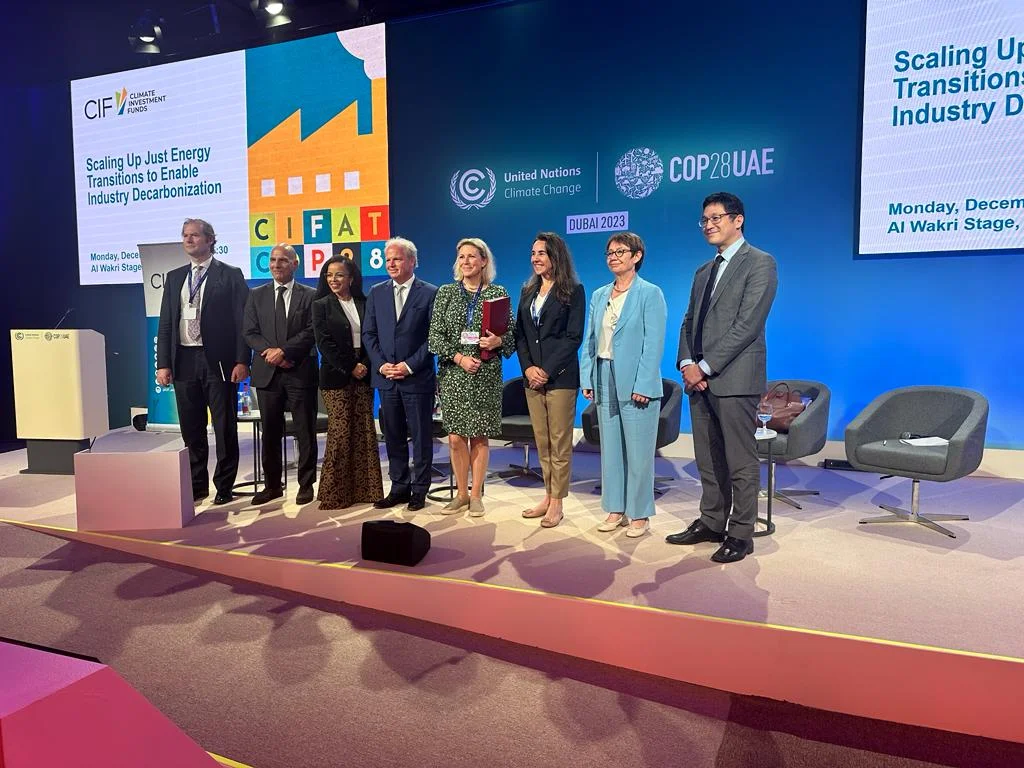Finance Day at COP28 comes at a crucial time for our planet. The gap to fund the energy transition is growing, and currently stands at a staggering $18 trillion. For a just and equitable transition, finance must ramp up significantly.
Yesterday, at a ministerial pledging session on climate investment funds, panellists explored this topic, and discussed the importance of collaboration, and the role of innovation in deploying finance to ensure it scales up the just energy transition.
ESG Mena walks through some of the highlights from the session
US Secretary of the Treasury announces new contribution of $568 million to CIF
During the panel, the US Secretary of the Treasury, Janet L. Yellen, announced a new contribution of $568 million to the Clean Technology Fund, CIF’s largest fund. This, she said, brings total US contributions to CIF to three and a half billion dollars.
She outlined that it will advance CTF programming through its private sector window, the Accelerating Coal Transition Programme and the Global Energy Storage Programme and enable CTF’s expansion to support new areas, including clean energy supply chains in green industry.
“Today, I’d also like to express my support for the World Bank’s announcement that it will launch the CIF Capital Markets Mechanism in 2024,” she said.
Further, she called on the World Bank and others involved to launch the CIF Capital Markets Mechanism “well ahead of COP29.”
An urgency to act
Axel van Trotsenburg, World Bank’s Senior Managing Director, said: “There’s urgency to act, we need to have massive investments, come together and act now.”
He shared that in the next fiscal year, about 45% of its total commitments will be dedicated to climate change, including the energy transition, but he highlighted that this is not enough.
“Together, we may have a little bit of a better chance to make a difference. Therefore, it is so important that there is this work going on through the Climate Investment Fund, including a call in general towards us as multilaterals to be more innovative.”
He explained that CIF is working within the bank and partnering with its treasury to look into developing the Capital Market Mechanism.
Baroness Charlotte Vere of Norbiton, Parliamentary Secretary at HM Treasury, United Kingdom, discussed the importance of looking at “all different sources of finance,” adding that what had struck her at COP was learning “quite how much financing is going to be needed in all sorts of different locations, and different ways of implementation.”
Public funds, she outlined, are not going to do it alone, “they’re not going to do it by a long way,” she said.
The Capital Markets Mechanism
Elsewhere, she highlighted the Brazil Industrial Decarbonisation Hub, a country-led initiative between Brazil’s Ministry of Development, Industry, Trade and Services (MDIC) and the UK’s Department of Energy Security and Net Zero (DESNZ).
She said the platform will bring together the different kinds of financing required to take the hydrogen sector forward in Brazil, which has just announced its G20 presidency.
On green hydrogen, Secretary for International Affairs at the Ministry of Finance, Tatiana Rosito, said the energy source is “a crucial part of Brazil’s ecological transformation plan, with plans to increase hydrogen production with a projected installed capacity of six GW by 2034.
Further, Rosito said that with a “very robust green hydrogen value chain,” Brazil could become a leader in green steel production.
She also welcomed the Capital Markets Mechanism. “This is one of the main challenges that we have ahead of us: how to really have the right risk-return profile to allow for these investments,” she said. Adding: “But finally, we also need to work at the country level.”
Later, Adam Wang-Levine, U.S. Deputy Assistant Secretary for Climate, highlighted Vice President Kamala Harris’ announcement of the Clean Technology Fund and the Clean Energy Supply Chain Collaborative. Further, shared plans to use these contributions to explore new ways in which the clean technology funds can deploy these resources, including clean energy supply chains, green industry and industry decarbonisation.
Wang-Levine also discussed the Capital Markets Mechanism, which he said is an “innovative opportunity” to capture value from the CTF reflows, which can fund new programming.
“I think this is an important priority not only because of the financial efficiency that can be gained from it, but also as a model for other climate funds in the future. Further, he said that the CCMM, of which the World Bank will serve as the treasury manager, can make CIFs “much more financially efficient”, and “not dependent on donor resources.”
“However, we continue to believe that donor grants will still be needed for the CIF to deliver across its mandate, especially for resilience.”



